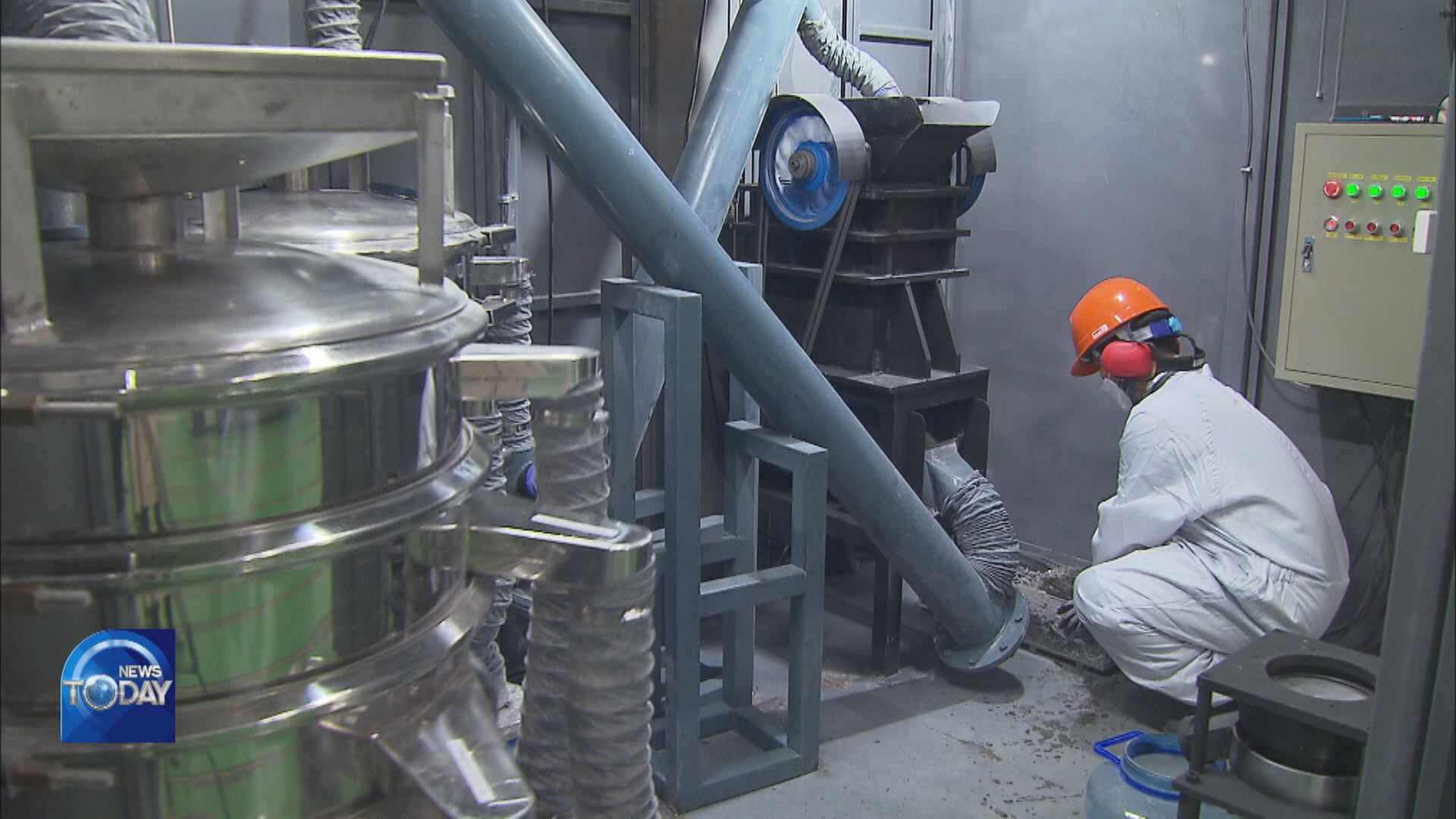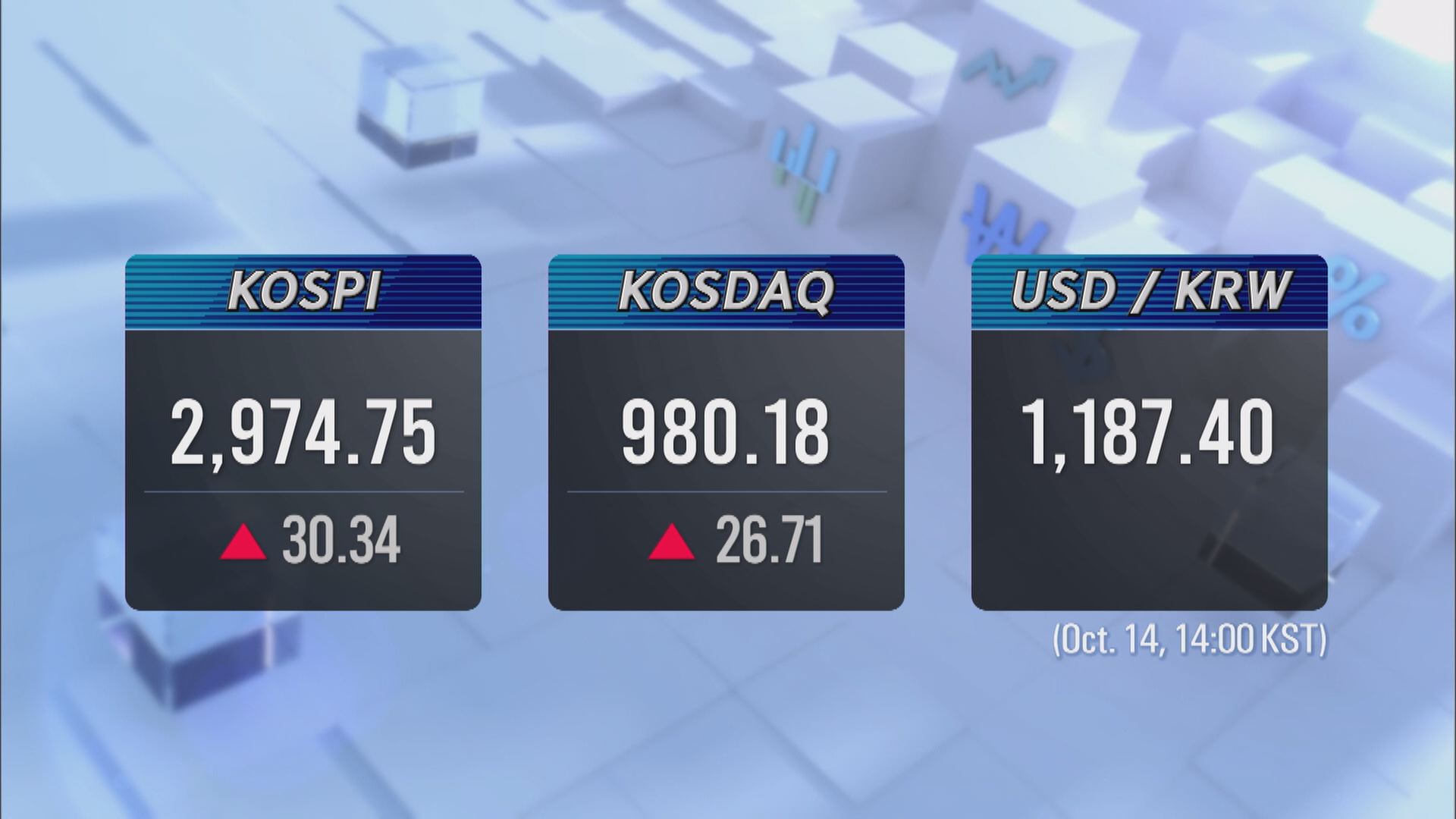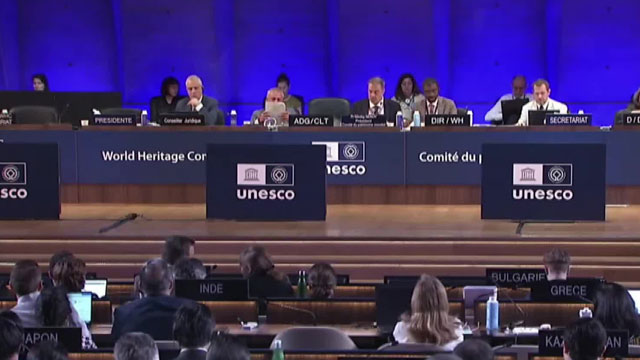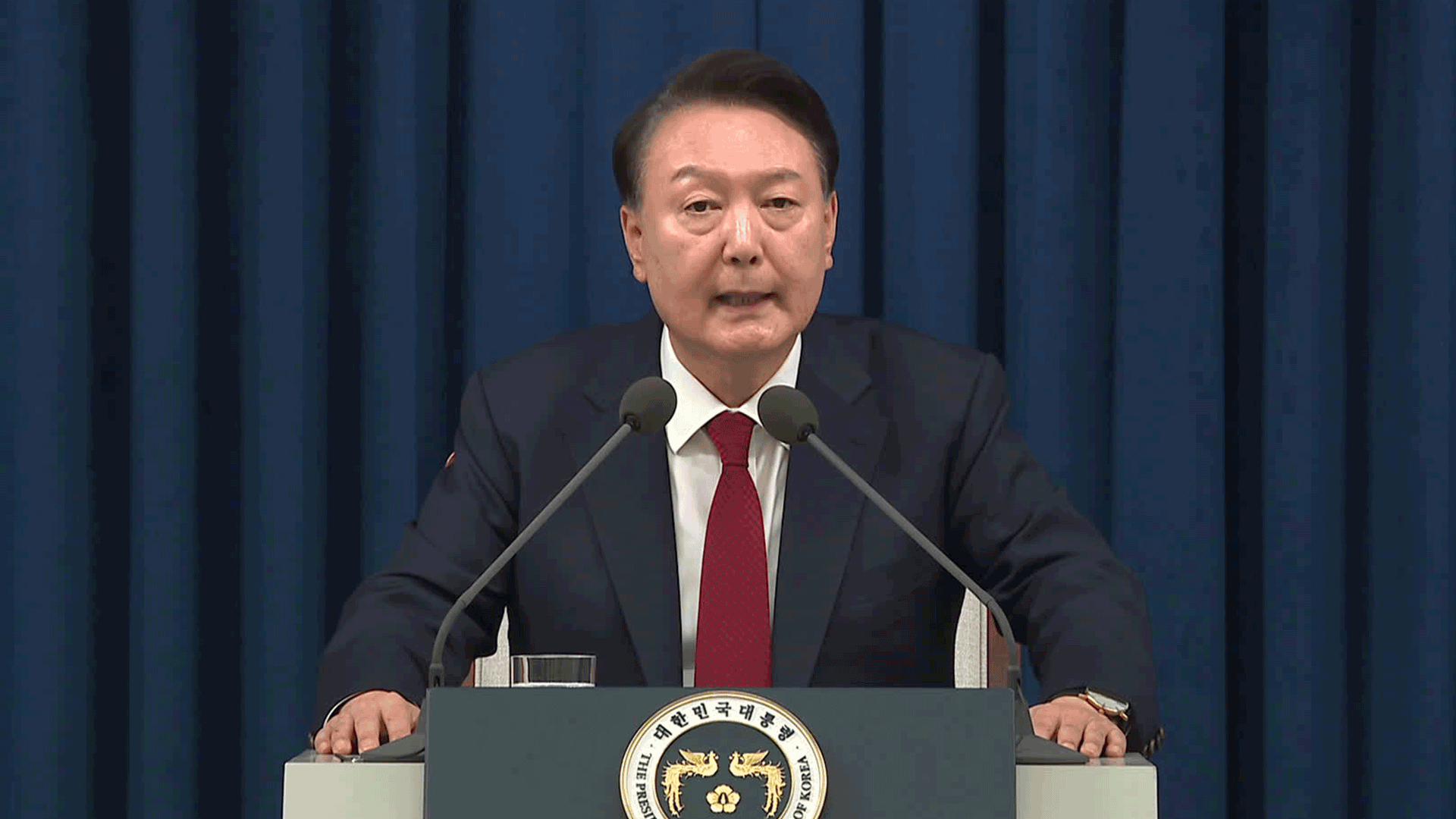TECHNOLOGY TO MAKE MATERIALS ON THE MOON
입력 2021.10.14 (15:30)
수정 2021.10.14 (16:46)
읽어주기 기능은 크롬기반의
브라우저에서만 사용하실 수 있습니다.
[Anchor Lead]
NASA's Artemis program seeks to build a crewed space station on the Moon by 2028. South Korea is also participating in it. Transporting construction materials to the Moon sounds like an unfeasible task. A Korean research center has developed a core technology for producing and using construction materials to the Moon.
[Pkg]
Black stones are ground into powder. This is a simulant of lunar soil. It was made of basalt from Cheorwon, Gangwon-do Province.
[Soundbite] Yoo Byung-heon(KICT) : "We collected samples nationwide and conducted chemical analyses to find soil that approximates lunar soil the most."
Korean researchers have developed a technology for producing bricks using lunar soil based on this soil simulant. That's because transporting bricks to the Moon is impossible.
[Soundbite] Shin Hyu-soung(KICT) : "It costs KRW 1.5 bn to 3 bn to transport just one kilogram of materials to the Moon from Earth. Building a space station on the Moon without using local resources is impossible."
However, liquids cannot be used in the Moon's vacuum atmosphere. The researchers found a way to produce bricks using no water whatsoever. After placing soil in molds and microwaving it, it turns into solid bricks.
[Soundbite] Kim Young-jae(KICT) : "The particles blend together and the texture becomes firm enough to make solid bricks. Their compressive strength is similar to that of concrete."
The researchers have also developed drilling equipment for building the foundation. It weighs only 14 kg and consumes just as much energy as one electric fan. The device has been tested more than 100 times in Antarctica, where temperatures plunge to 50 degrees below zero.
[Soundbite] Yoo Byung-heon(KICT) : "It's the world's first. It's the only device that can drill through ice, lunar soil and sand."
The Korea Institute of Civil Engineering and Building Technology, a winner of the 2017 Centennial Challenges held by NASA, is working with researchers from the U.S. and Europe to build a space station on the Moon.
NASA's Artemis program seeks to build a crewed space station on the Moon by 2028. South Korea is also participating in it. Transporting construction materials to the Moon sounds like an unfeasible task. A Korean research center has developed a core technology for producing and using construction materials to the Moon.
[Pkg]
Black stones are ground into powder. This is a simulant of lunar soil. It was made of basalt from Cheorwon, Gangwon-do Province.
[Soundbite] Yoo Byung-heon(KICT) : "We collected samples nationwide and conducted chemical analyses to find soil that approximates lunar soil the most."
Korean researchers have developed a technology for producing bricks using lunar soil based on this soil simulant. That's because transporting bricks to the Moon is impossible.
[Soundbite] Shin Hyu-soung(KICT) : "It costs KRW 1.5 bn to 3 bn to transport just one kilogram of materials to the Moon from Earth. Building a space station on the Moon without using local resources is impossible."
However, liquids cannot be used in the Moon's vacuum atmosphere. The researchers found a way to produce bricks using no water whatsoever. After placing soil in molds and microwaving it, it turns into solid bricks.
[Soundbite] Kim Young-jae(KICT) : "The particles blend together and the texture becomes firm enough to make solid bricks. Their compressive strength is similar to that of concrete."
The researchers have also developed drilling equipment for building the foundation. It weighs only 14 kg and consumes just as much energy as one electric fan. The device has been tested more than 100 times in Antarctica, where temperatures plunge to 50 degrees below zero.
[Soundbite] Yoo Byung-heon(KICT) : "It's the world's first. It's the only device that can drill through ice, lunar soil and sand."
The Korea Institute of Civil Engineering and Building Technology, a winner of the 2017 Centennial Challenges held by NASA, is working with researchers from the U.S. and Europe to build a space station on the Moon.
■ 제보하기
▷ 카카오톡 : 'KBS제보' 검색, 채널 추가
▷ 전화 : 02-781-1234, 4444
▷ 이메일 : kbs1234@kbs.co.kr
▷ 유튜브, 네이버, 카카오에서도 KBS뉴스를 구독해주세요!
- TECHNOLOGY TO MAKE MATERIALS ON THE MOON
-
- 입력 2021-10-14 15:30:06
- 수정2021-10-14 16:46:59

[Anchor Lead]
NASA's Artemis program seeks to build a crewed space station on the Moon by 2028. South Korea is also participating in it. Transporting construction materials to the Moon sounds like an unfeasible task. A Korean research center has developed a core technology for producing and using construction materials to the Moon.
[Pkg]
Black stones are ground into powder. This is a simulant of lunar soil. It was made of basalt from Cheorwon, Gangwon-do Province.
[Soundbite] Yoo Byung-heon(KICT) : "We collected samples nationwide and conducted chemical analyses to find soil that approximates lunar soil the most."
Korean researchers have developed a technology for producing bricks using lunar soil based on this soil simulant. That's because transporting bricks to the Moon is impossible.
[Soundbite] Shin Hyu-soung(KICT) : "It costs KRW 1.5 bn to 3 bn to transport just one kilogram of materials to the Moon from Earth. Building a space station on the Moon without using local resources is impossible."
However, liquids cannot be used in the Moon's vacuum atmosphere. The researchers found a way to produce bricks using no water whatsoever. After placing soil in molds and microwaving it, it turns into solid bricks.
[Soundbite] Kim Young-jae(KICT) : "The particles blend together and the texture becomes firm enough to make solid bricks. Their compressive strength is similar to that of concrete."
The researchers have also developed drilling equipment for building the foundation. It weighs only 14 kg and consumes just as much energy as one electric fan. The device has been tested more than 100 times in Antarctica, where temperatures plunge to 50 degrees below zero.
[Soundbite] Yoo Byung-heon(KICT) : "It's the world's first. It's the only device that can drill through ice, lunar soil and sand."
The Korea Institute of Civil Engineering and Building Technology, a winner of the 2017 Centennial Challenges held by NASA, is working with researchers from the U.S. and Europe to build a space station on the Moon.
NASA's Artemis program seeks to build a crewed space station on the Moon by 2028. South Korea is also participating in it. Transporting construction materials to the Moon sounds like an unfeasible task. A Korean research center has developed a core technology for producing and using construction materials to the Moon.
[Pkg]
Black stones are ground into powder. This is a simulant of lunar soil. It was made of basalt from Cheorwon, Gangwon-do Province.
[Soundbite] Yoo Byung-heon(KICT) : "We collected samples nationwide and conducted chemical analyses to find soil that approximates lunar soil the most."
Korean researchers have developed a technology for producing bricks using lunar soil based on this soil simulant. That's because transporting bricks to the Moon is impossible.
[Soundbite] Shin Hyu-soung(KICT) : "It costs KRW 1.5 bn to 3 bn to transport just one kilogram of materials to the Moon from Earth. Building a space station on the Moon without using local resources is impossible."
However, liquids cannot be used in the Moon's vacuum atmosphere. The researchers found a way to produce bricks using no water whatsoever. After placing soil in molds and microwaving it, it turns into solid bricks.
[Soundbite] Kim Young-jae(KICT) : "The particles blend together and the texture becomes firm enough to make solid bricks. Their compressive strength is similar to that of concrete."
The researchers have also developed drilling equipment for building the foundation. It weighs only 14 kg and consumes just as much energy as one electric fan. The device has been tested more than 100 times in Antarctica, where temperatures plunge to 50 degrees below zero.
[Soundbite] Yoo Byung-heon(KICT) : "It's the world's first. It's the only device that can drill through ice, lunar soil and sand."
The Korea Institute of Civil Engineering and Building Technology, a winner of the 2017 Centennial Challenges held by NASA, is working with researchers from the U.S. and Europe to build a space station on the Moon.
이 기사가 좋으셨다면
-
좋아요
0
-
응원해요
0
-
후속 원해요
0














![[단독] 김건희 특검, ‘공천 개입’ 관련 김영선 전 의원 소환 통보…일정 조율 중](/data/news/2025/07/16/20250716_p7hDHF.jpg)


이 기사에 대한 의견을 남겨주세요.